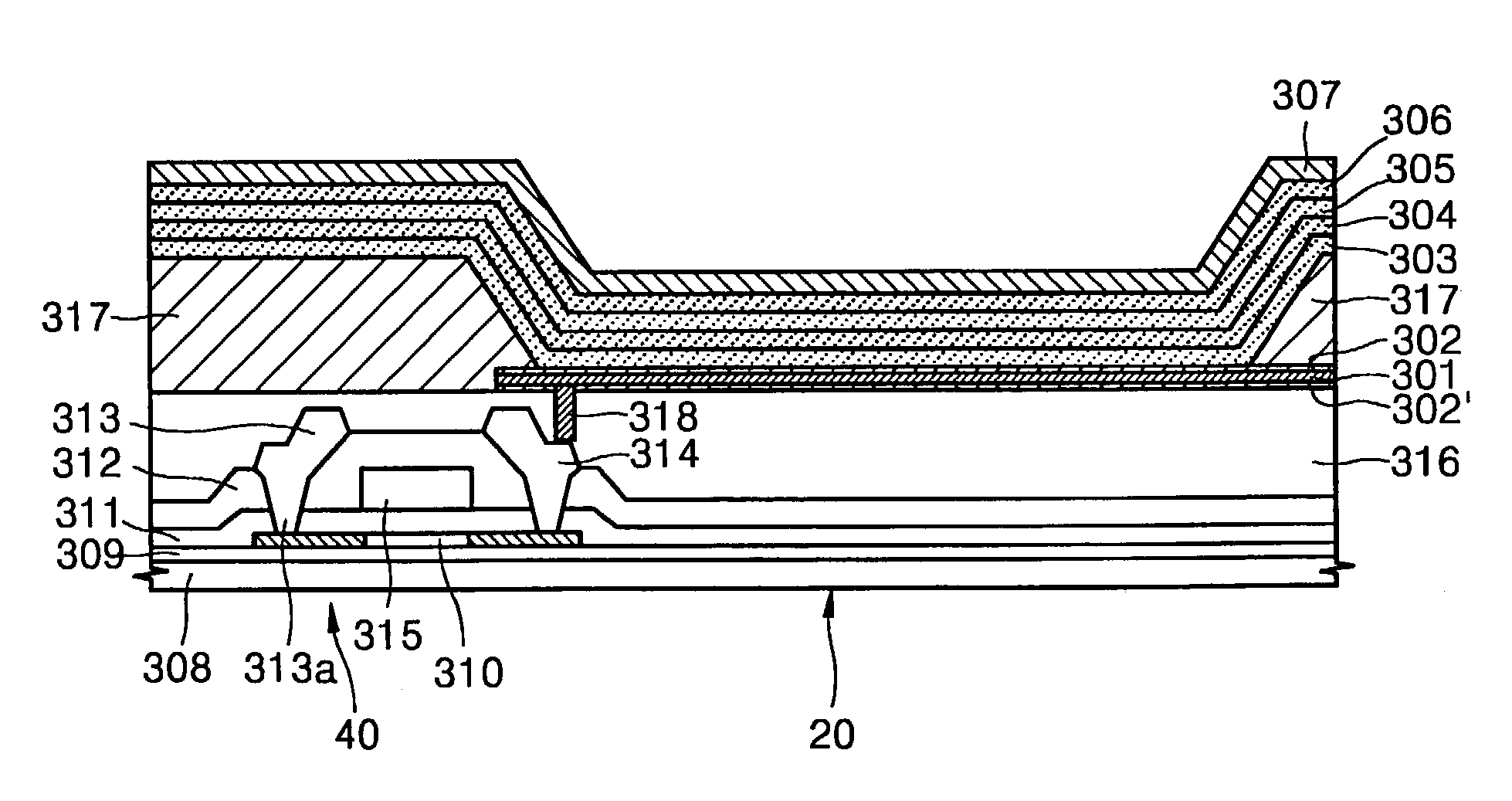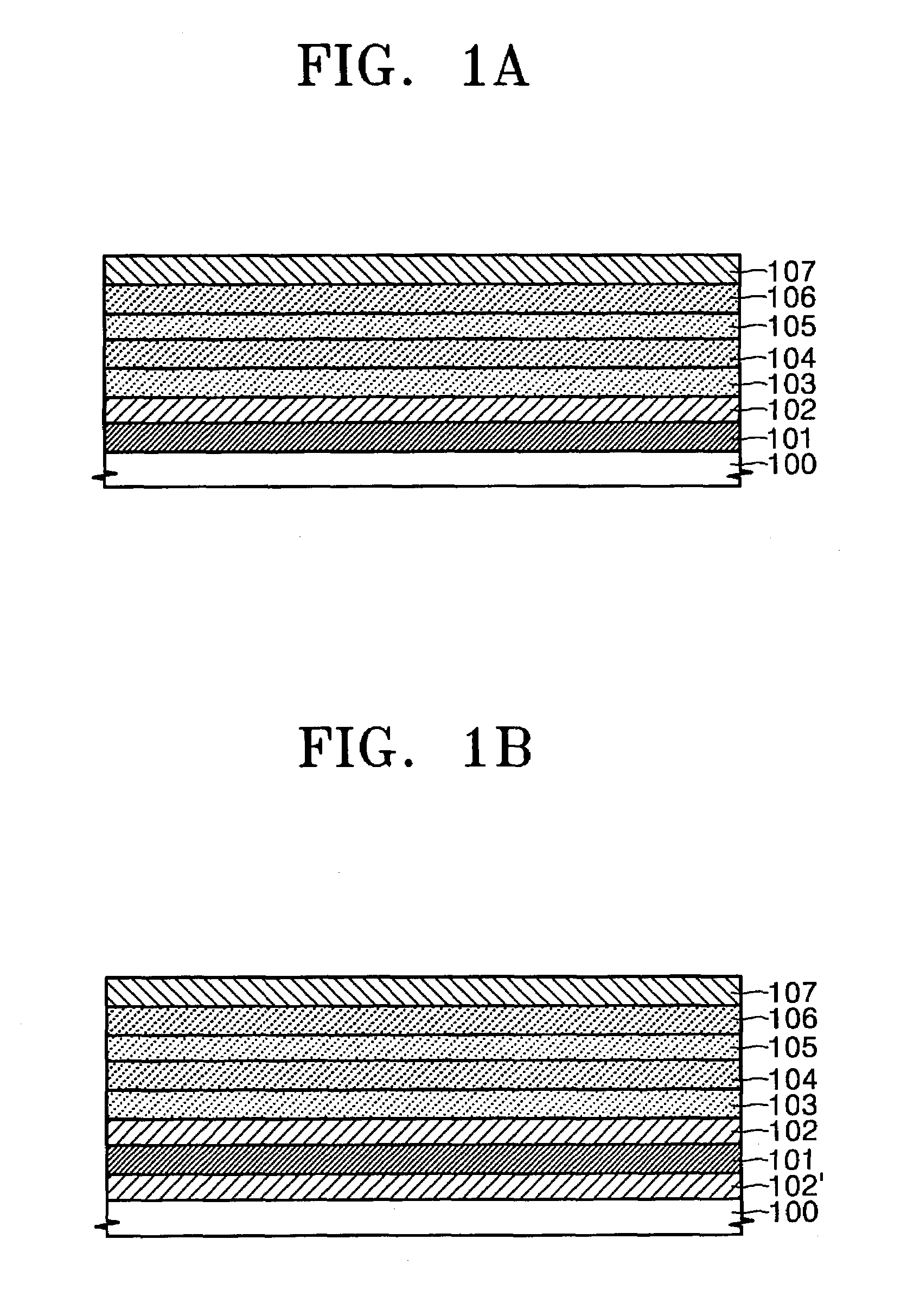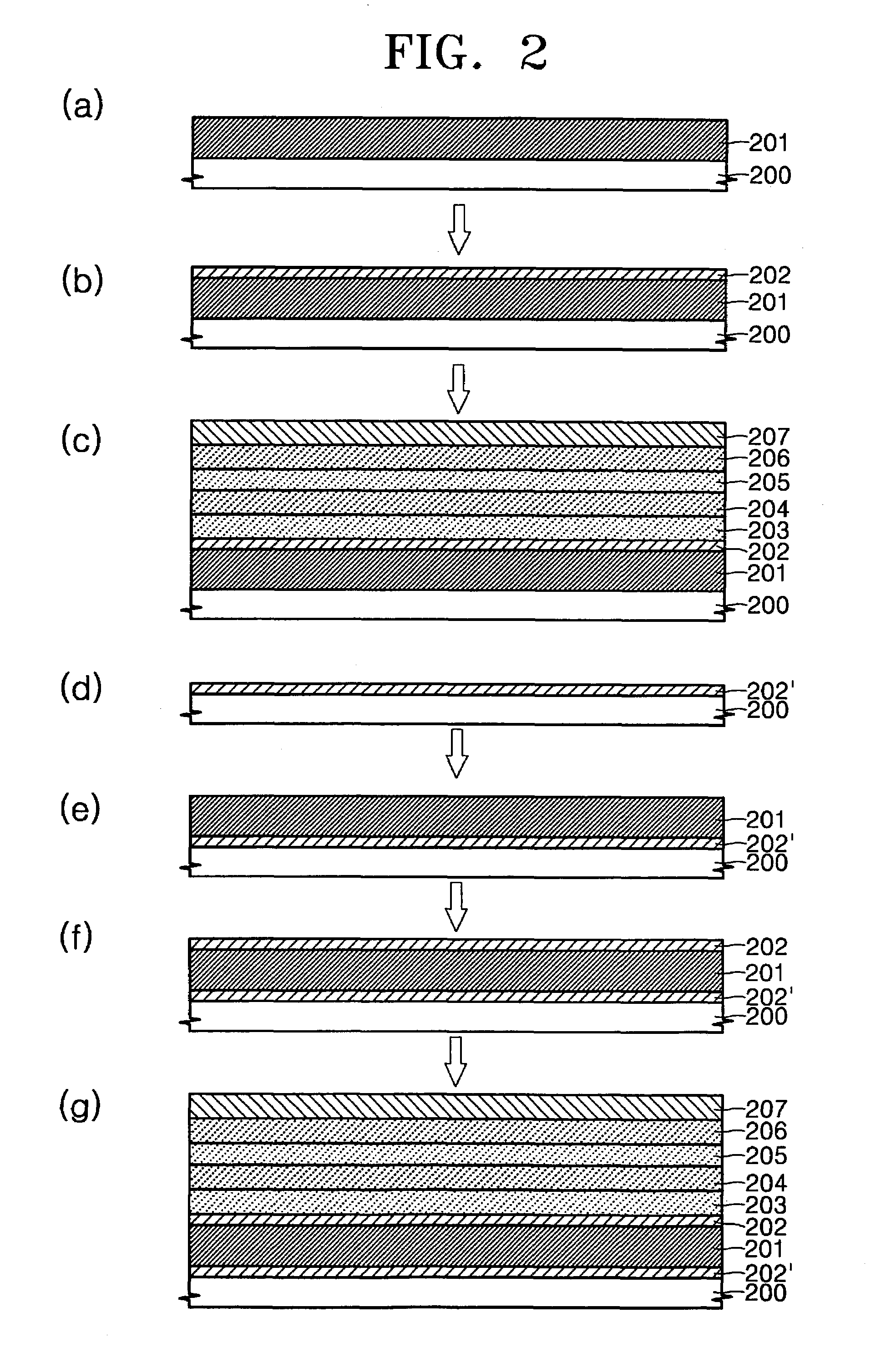Organic electroluminescent device employing multi-layered anode
- Summary
- Abstract
- Description
- Claims
- Application Information
AI Technical Summary
Benefits of technology
Problems solved by technology
Method used
Image
Examples
example 1
[0094]Ni was sputtered onto a glass substrate to a thickness of 75 Å at 0.7 KW under 2 mmtorr using an RF sputter to form a third anode. Then Al was sputtered onto the third anode at 4 KW under 4 mmtorr using a DC sputter to form a first anode having a thickness of 1800 Å. Ni was sputtered onto the first anode to a thickness of 75 Å at 0.7 KW under 2 mmtorr using an RF sputter to form a second anode.
[0095]Subsequently, an aqueous solution of HCl was sprayed onto the resultant product as an Al etchant, followed by simultaneous etching at 40° C., thereby forming a patterned anode.
[0096]In order to form an insulator layer on the patterned anode, a 2 mm×2 mm emission area pattern was formed. Subsequently, the resultant product was cleaned using water, isopropyl alcohol and acetone, respectively, and was further cleaned using an UV / O3 cleaner.
[0097]Thereafter, IDE 406 (manufactured by IDEMITSU KOSAN LTD.) was vacuum-deposited on the second anode of the resultant product to form a hole in...
example 2
[0102]The same procedure as Example 1 was performed, except that a thickness of a third anode was 100 Å, a thickness of a second anode was 1800 Å, and a thickness of a first anode was 100 Å, thus completing a front-emitting organic EL device.
example 3
[0103]Al was sputtered onto a glass substrate to a thickness of 1800 Å at 4 KW under 4 mmtorr using a DC sputter to form a first anode. Then, Ni was sputtered onto the third anode at 0.7 KW under 2 mmtorr using an RF sputter to form a second anode having a thickness of 75 Å, thus forming a bilayer anode. Thereafter, the same procedure as Example 1 was performed, thus completing a front-emitting organic EL device.
PUM
 Login to View More
Login to View More Abstract
Description
Claims
Application Information
 Login to View More
Login to View More - Generate Ideas
- Intellectual Property
- Life Sciences
- Materials
- Tech Scout
- Unparalleled Data Quality
- Higher Quality Content
- 60% Fewer Hallucinations
Browse by: Latest US Patents, China's latest patents, Technical Efficacy Thesaurus, Application Domain, Technology Topic, Popular Technical Reports.
© 2025 PatSnap. All rights reserved.Legal|Privacy policy|Modern Slavery Act Transparency Statement|Sitemap|About US| Contact US: help@patsnap.com



